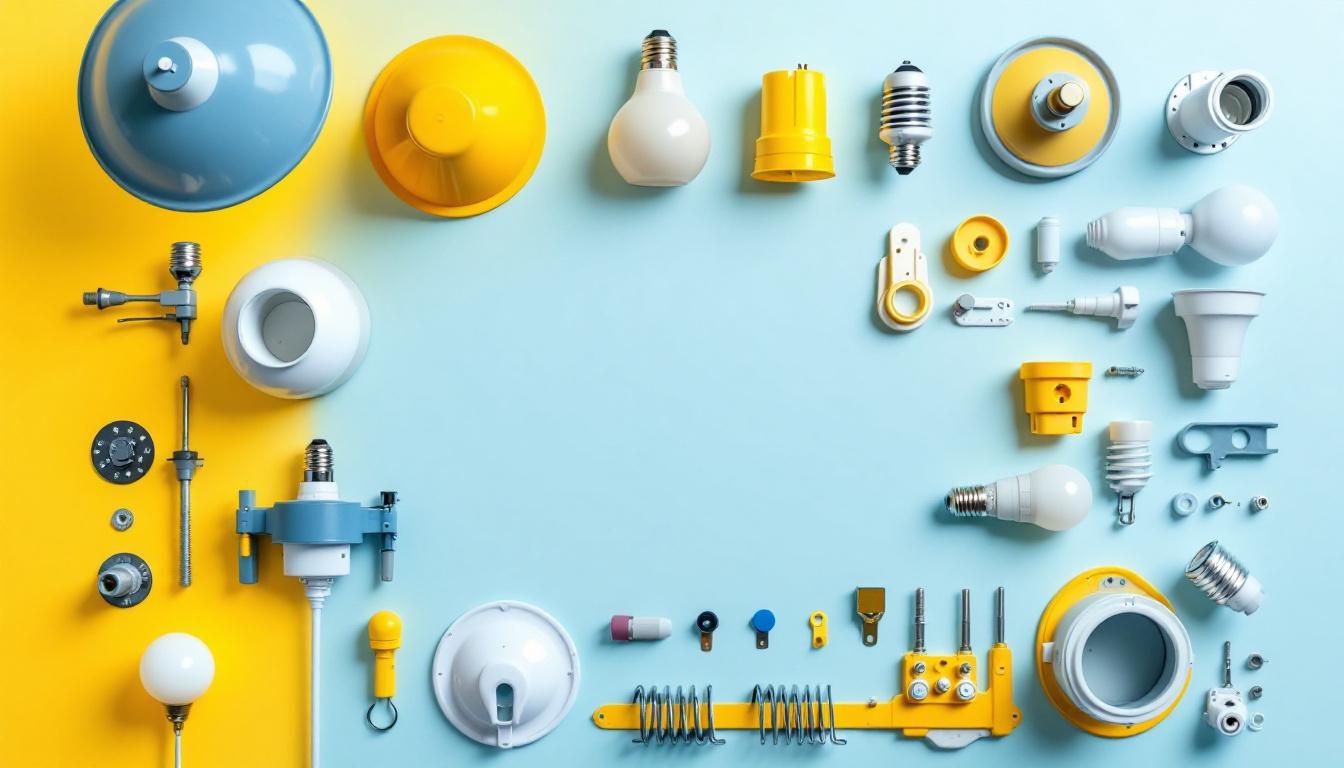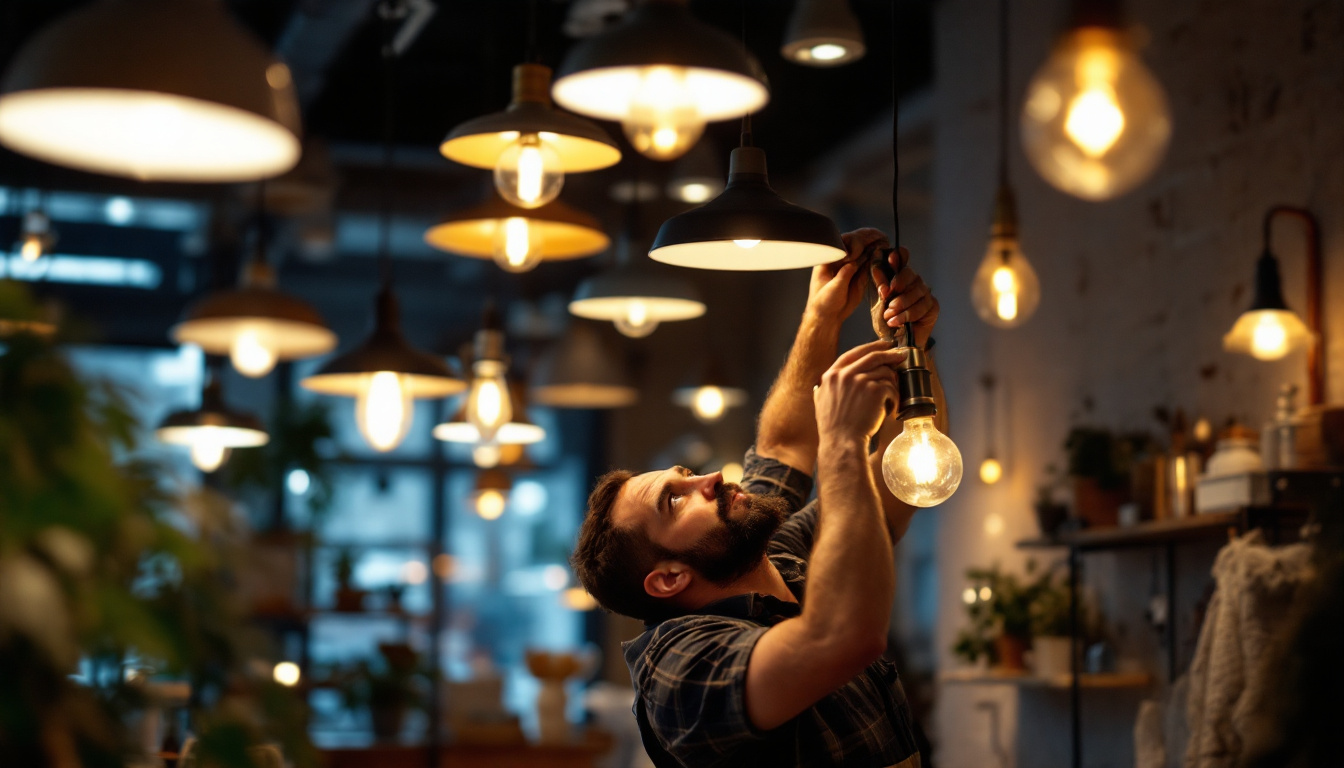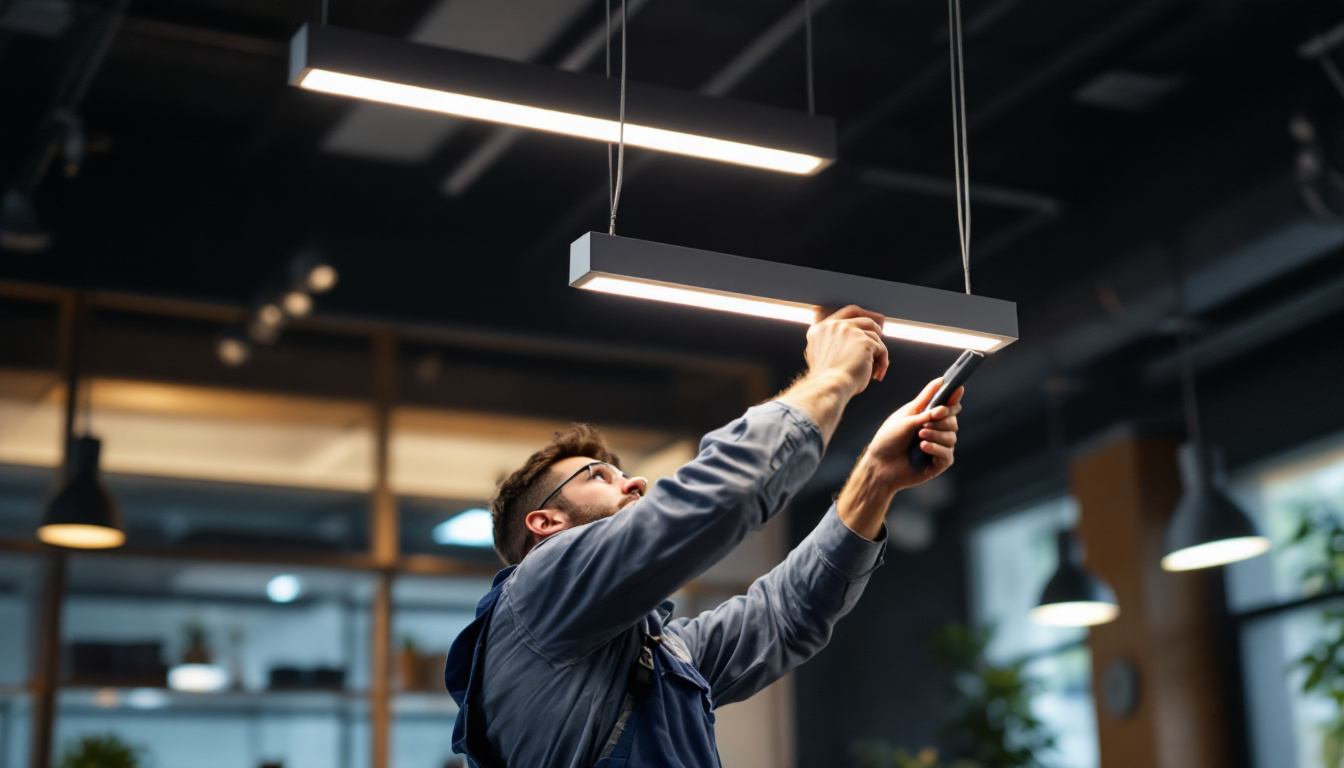
Understanding the various components of a light fixture is essential for lighting contractors. Whether installing new fixtures or replacing old ones, knowing the parts that make up a light fixture can streamline the process and enhance the quality of the work. This article delves into the key components of light fixtures, providing insights that can aid in both installation and troubleshooting.
Light fixtures are not just simple devices that illuminate spaces; they are complex systems made up of various components that work together to provide effective lighting solutions. Familiarity with these components can significantly improve a contractor’s efficiency and effectiveness.
The housing is the outer shell of the light fixture. It serves both aesthetic and functional purposes. Made from materials such as metal, plastic, or glass, the housing protects the internal components from dust and damage while also contributing to the overall design of the fixture.
In addition to its protective role, the housing can influence the light distribution. For instance, reflective surfaces within the housing can enhance brightness and direct light more effectively. Understanding the different types of housings available can help contractors select the right fixture for a specific application.
The socket is the component that holds the light bulb in place. It is crucial for ensuring a secure connection between the bulb and the fixture’s electrical system. Sockets come in various types, including standard screw-in sockets and pin-based sockets, each designed for specific bulb types.
Contractors should be aware of the compatibility between the socket and the light bulb. Using the wrong type of socket can lead to poor performance or even damage to the bulb. Additionally, understanding the wattage and voltage ratings of sockets is vital for ensuring safety and efficiency in lighting installations.
Electrical wiring is the backbone of any light fixture, providing the necessary power to the bulb. Proper wiring is essential for safety and functionality. Contractors must be familiar with the different types of wiring used in lighting fixtures, including insulated and non-insulated wires, as well as the various gauge sizes.
When working with electrical wiring, it is crucial to follow local electrical codes and regulations. This ensures that installations are safe and compliant, reducing the risk of electrical failures or hazards. Understanding how to properly connect and secure wiring can also prevent issues down the line.
Beyond the primary components, several additional parts contribute to the overall functionality and effectiveness of light fixtures. These elements can enhance performance, improve energy efficiency, and provide additional features.
The lens or diffuser is a critical component that affects how light is distributed in a space. Lenses can be made of glass or plastic and come in various shapes and textures. They help to soften the light, reduce glare, and provide a more even illumination.
Contractors should consider the type of lens or diffuser used in a fixture, as it can significantly impact the quality of light. For example, frosted lenses can diffuse light more effectively than clear lenses, making them suitable for spaces where glare reduction is essential.
For fixtures that use fluorescent or LED bulbs, ballasts and drivers are essential components. A ballast regulates the current to the bulb, ensuring it operates efficiently and safely. Similarly, a driver is used for LED fixtures to convert the incoming voltage to the appropriate level for the LED technology.
Understanding the differences between magnetic and electronic ballasts, as well as the various types of LED drivers, can help contractors make informed decisions when selecting fixtures. Properly matching the ballast or driver to the bulb type is crucial for optimal performance.
Mounting hardware is often overlooked but plays a vital role in the installation of light fixtures. This includes brackets, screws, and anchors that secure the fixture to the ceiling or wall. The choice of mounting hardware can depend on the fixture’s weight, design, and the surface it will be mounted on.
Contractors should ensure that the mounting hardware is compatible with the fixture and the installation surface. Proper installation of mounting hardware not only supports the fixture but also contributes to safety and stability.
Light fixtures come in various types, each designed for specific applications and environments. Understanding these types can help contractors choose the right fixture for their projects.
Ambient lighting fixtures provide general illumination for a space. They are designed to create a uniform light level, making it easier to navigate and use a room. Examples include ceiling-mounted fixtures, chandeliers, and recessed lighting.
When selecting ambient lighting fixtures, contractors should consider the size of the space and the desired light level. The fixture’s design and placement can significantly affect the overall ambiance of the area.
Task lighting fixtures are designed to provide focused illumination for specific tasks, such as reading, cooking, or working. These fixtures include desk lamps, under-cabinet lighting, and pendant lights.
Contractors should assess the tasks that will be performed in a space to determine the best type of task lighting. The intensity and direction of the light are crucial factors to consider for optimal functionality.
Accent lighting fixtures are used to highlight specific features or areas within a space, such as artwork, architectural details, or landscaping. These fixtures include spotlights, track lighting, and wall-mounted sconces.
When installing accent lighting, contractors should consider the angle and intensity of the light to achieve the desired effect. Proper placement can enhance the visual appeal of a space and draw attention to key features.
As energy efficiency becomes increasingly important, understanding the components of light fixtures can help contractors make sustainable choices. Selecting energy-efficient fixtures not only reduces electricity consumption but also lowers operating costs for clients.
LED technology has revolutionized the lighting industry, offering significant advantages over traditional incandescent and fluorescent bulbs. LEDs consume less energy, have a longer lifespan, and produce less heat, making them an ideal choice for various applications.
Contractors should stay informed about the latest advancements in LED technology, including smart lighting options that allow for remote control and automation. These features can enhance energy savings and improve user experience.
Energy Star ratings are an important consideration when selecting light fixtures. Fixtures with this certification meet strict energy efficiency guidelines set by the Environmental Protection Agency (EPA). Using Energy Star-rated fixtures can help contractors promote sustainability and attract environmentally conscious clients.
Contractors should educate clients about the benefits of choosing Energy Star-rated fixtures, including potential rebates and incentives offered by utility companies. This knowledge can help clients make informed decisions about their lighting choices.
As sustainability becomes a priority, contractors must also consider the end-of-life disposal of light fixtures. Many components, such as bulbs and ballasts, can contain hazardous materials that require special handling and recycling.
Contractors should be aware of local regulations regarding the disposal of lighting components and educate clients on proper recycling practices. This commitment to sustainability can enhance a contractor’s reputation and contribute to a healthier environment.
Even with a solid understanding of light fixture components, issues can arise during installation or operation. Being equipped to troubleshoot common problems can save time and enhance client satisfaction.
Flickering lights can be caused by several factors, including loose connections, incompatible bulbs, or faulty ballasts. Contractors should first check all connections to ensure they are secure. If the issue persists, it may be necessary to replace the bulb or ballast.
Understanding the specific type of fixture and its components can help contractors diagnose the problem more efficiently. Additionally, educating clients about potential causes can help manage their expectations during troubleshooting.
If a light fixture is not providing adequate illumination, several factors may be at play. This could include the wrong wattage bulb, a faulty socket, or inadequate wiring. Contractors should assess each component to identify the source of the issue.
In some cases, upgrading to a higher wattage bulb or replacing the socket may resolve the problem. Contractors should also consider the fixture’s design and placement, as these can impact light distribution.
Overheating can be a serious issue, leading to reduced lifespan and potential fire hazards. Common causes include using bulbs with higher wattage than the fixture is rated for or inadequate ventilation around the fixture.
Contractors should educate clients about the importance of using the correct wattage and ensuring proper airflow around fixtures. Regular maintenance checks can also help identify and address overheating issues before they become problematic.
Understanding the parts of a light fixture is essential for lighting contractors. From the housing and socket to the wiring and mounting hardware, each component plays a vital role in the functionality and safety of the fixture. By familiarizing themselves with these elements, contractors can streamline their installations, troubleshoot common issues, and provide clients with high-quality lighting solutions.
As the lighting industry continues to evolve, staying informed about new technologies and energy-efficient options will further enhance a contractor’s expertise. By prioritizing sustainability and understanding the intricacies of light fixtures, contractors can position themselves as knowledgeable professionals in a competitive market.
In the end, a thorough understanding of light fixture components not only benefits contractors but also contributes to the overall satisfaction of clients. With the right knowledge and skills, lighting contractors can illuminate spaces effectively and efficiently, creating environments that are both functional and aesthetically pleasing.
Ready to take your lighting projects to the next level? Look no further than LumenWholesale for all your lighting needs. We provide lighting contractors with high-quality, specification-grade lighting products at unbeatable wholesale prices. With our direct-to-contractor approach, you’ll enjoy superior products without the inflated markups often found at local distributors. Our extensive selection is designed to meet the highest industry standards, ensuring you deliver reliable and high-performance lighting solutions to your clients. Plus, with free shipping on bulk orders, you can stock up on premium lighting without worrying about hidden fees or compromises. Elevate your lighting installations with the perfect blend of quality, affordability, and convenience at LumenWholesale – Wholesale Lighting at the Best Value.

Discover how lighting contractors can enhance their business by tapping into the American outlets market.

Discover how 8-foot fluorescent light fixtures can enhance your lighting projects and boost profits.

Discover how the Lithonia Lighting 4′ 237V LED fixture is transforming the landscape for lighting contractors.

Discover the essentials of instant start ballasts in this comprehensive guide tailored for lighting contractors.